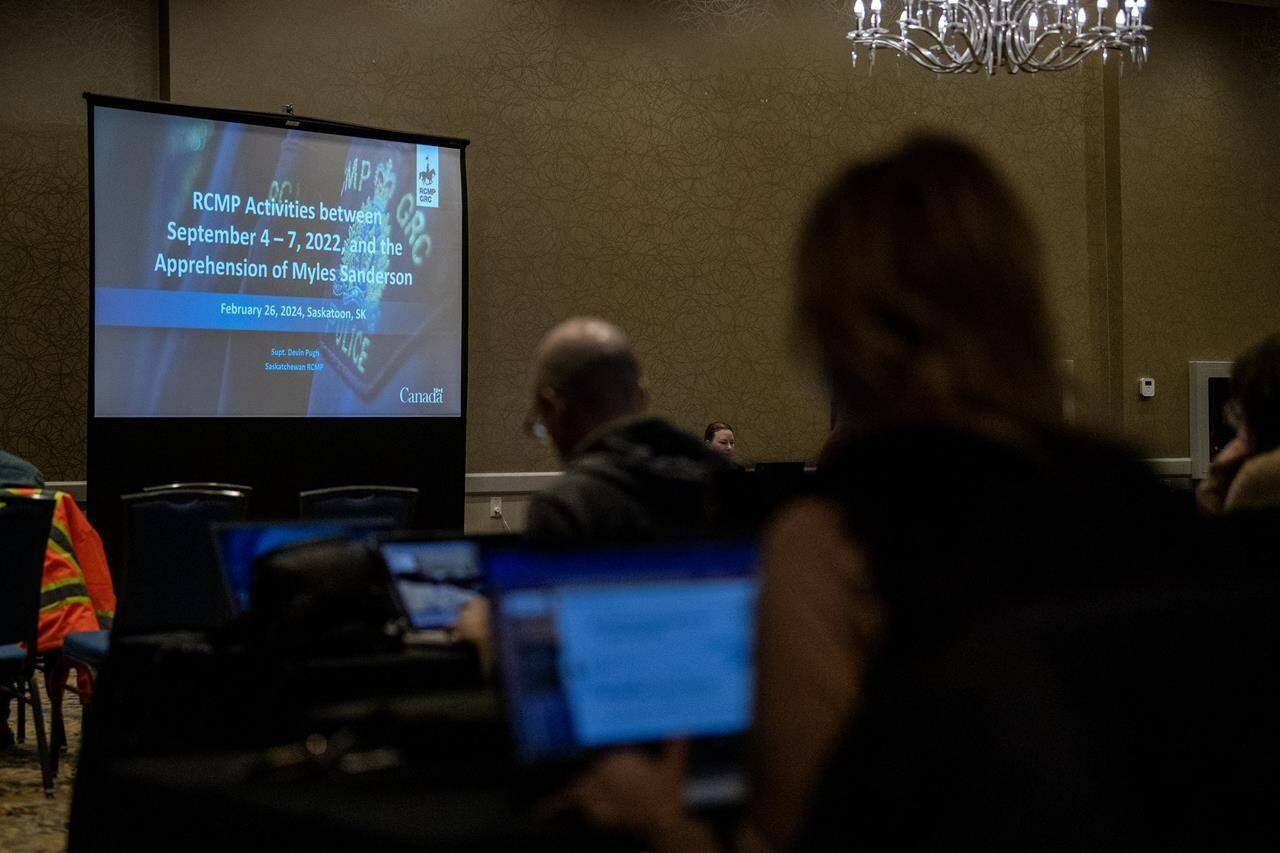Before a mass killer died of a cocaine overdose in police custody, he asked officers arresting him how many people he had killed in the stabbing rampage in Saskatchewan, an inquest heard Tuesday.
“How many bodies did I get?” Myles Sanderson says in video captured on RCMP dashboard cameras.
Three days before he was captured, Sanderson went from home to home on the James Smith Cree Nation and in the nearby village of Weldon, kicking in doors and attacking people. Eleven people were killed and 17 others were injured.
On Tuesday, jurors saw video of Sanderson’s arrest during the coroner’s inquest into the killer’s death.
Sgt. Ken Kane, a detective with Saskatoon police and one of the officers tasked with investigating Sanderson’s death, described the video to jurors.
Kane said 32-year-old Sanderson expresses shock that “nobody even shot at me, man.”
“You should have shot me,” Sanderson says repeatedly to officers in the video.
The video shows Sanderson’s knees buckle and him beginning to convulse.
The killer was given naloxone, a drug used to reverse opioid overdoses. An officer also found a rolled-up $20 bill and a bag of a white substance in Sanderson’s hand, the inquest heard.
Officers performed chest compressions on Sanderson until paramedics arrived and took him to hospital in an ambulance.
Dr. Shaun Ladham, a forensic pathologist, told the inquest that Sanderson died from toxicity due to cocaine.
“There was so much cocaine there,” Ladham said of the amount found in Sanderson’s body.
A toxicologist testified that blood samples taken from Sanderson had one of the highest cocaine levels she’d ever seen.
“A very, very high level,” said Jennifer Billinsky, who tested the samples from Sanderson.
There were no traces of alcohol, fentanyl or methamphetamine.
Darryl Burns, whose sister was killed on the First Nation, said he felt a surge of emotions watching the video of Sanderson’s arrest.
“I couldn’t understand what I was going through. I didn’t know if it was anger or relief or what it was,” Burns said during a break in the inquest.
“It’s not that he was dead, but that the danger was gone,” Burns said.
Sanderson had been on the run for several days when police caught up to him on Sept. 7, 2022.
The inquest previously heard a call to police from a woman who said Sanderson had broken into her home and stolen her truck, setting off a rapid search throughout the area near Wakaw, Sask.
Const. Brianne Hathaway, who was in an unmarked vehicle, told the inquest she spotted the truck and began to follow as it went toward Highway 11, the main road heading to Saskatoon from points north.
Dashboard video shows the truck driving into a gas station parking lot, onto a gravel road, then onto the highway in the wrong direction.
Police speed after the truck as Sanderson steers into oncoming traffic. He drives across the grass and into the southbound lanes.
Const. Heidi Marshall testified it gave her the opportunity to do a difficult and risky vehicle manoeuvre to stop the killer. For a moment, she thought about her two young children at home and what a mistake could mean for them, she said.
“That quickly fleeted out of my mind,” she told the inquest.
The video shows Marshall driving her vehicle into the truck, forcing it to spin. The truck goes into a ditch.
“I got him. I got him,” Marshall says in the video.
As officers pulled Sanderson out of the truck and arrested him, Hathaway said he recognized her. He asked if she had been in the truck following him.
The inquest, scheduled for a week in Saskatoon, is required under legislation because Sanderson died in police custody.
It is to establish when and where Sanderson died and the cause of his death. The six-person jury may also provide recommendations.
A separate inquest into the massacre was held last month, examining each of the killings and issuing more than two dozen recommendations.
READ ALSO: Details of Saskatchewan killer’s arrest expected in 2nd day of inquest

